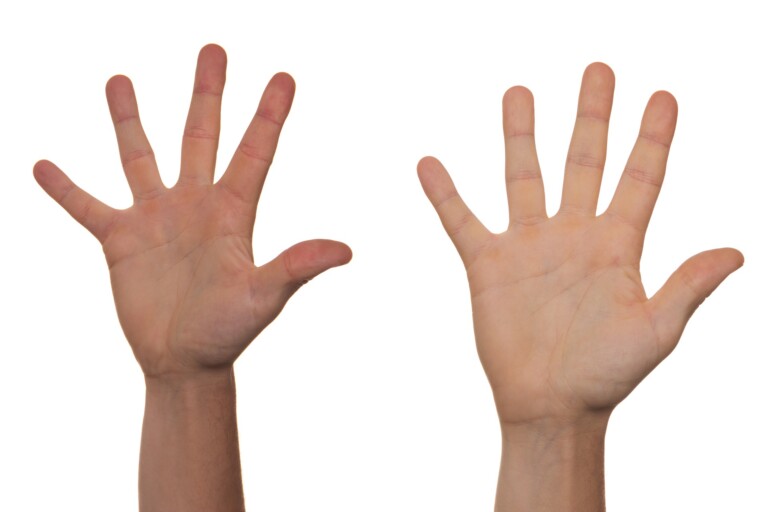
Flex and Extend: Modeling a Human Hand
Lead students in an engaging and creative project where they build a model that demonstrates the flexing action of the human hand. Students use craft
Flex and extend, contract and relax! You may have heard these commands in an exercise or dance class. They’re also commands your muscles and muscle fibers receive constantly from your nervous system. The human body consists of over 650 muscles categorized into 3 types: smooth, skeletal, and cardiac muscle.
Skeletal muscles, also called striated, are the muscles over which you have conscious control. They are recognized by light and dark bands, or striations, and are the muscles that move the bones in the body. They can be developed through fitness and sports training.
Smooth muscles are controlled by the autonomic nervous system and are often referred to as involuntary muscles. They do not appear striated and move the body’s internal organs and secretory glands. Smooth muscle allows you to swallow, digest food, and circulate blood.
Cardiac muscle is found in the heart and looks similar to striated muscle but is involuntary. Cardiac muscle is responsible for the continual contraction/relaxation cycle that pumps blood throughout the body. For an average person, on an average day, the heart beats about 100,000 times. That’s a lot of responses to contract/relax commands!
Introduce or review the muscular system with the Muscular System infographic that visualizes the 3 types of muscle and diagrams the muscle contraction process.
Some muscles work in pairs. Students may be familiar with the opposing relationship between biceps and triceps. A flexed and extended arm model can illustrate the paired muscle relationship. An easy, relatable, and affordable way to illustrate this relationship is with a chicken wing dissection. Use our free chicken wing dissection activity to help students analyze the structure and function of muscle pairs and the anatomical relationship between muscle and bone.
Are you looking for a more intensive study in muscle anatomy? Carolina has several options available.
For a complete look at mammalian musculature, the dissection of a Carolina’s Perfect Solution® Skinned Cat provides students with the experience of identifying large muscle groups and individual muscles, muscle and connective tissue relationships, and bone and muscle relationships.
For histological studies, we have detailed microstructure models of smooth, skeletal, and cardiac muscle and a complete line of microscope slides for identifying muscle cell types and connective tissue histology, several of which come with student visual aids. When it’s time for physiology investigations, this ATP lab helps students explain the contraction and relaxation process with glycerinated striated muscle and additional ions.
Carolina is here to help with whatever you need to flex your instructional muscles on a contracted budget–just give us the command.

Lead students in an engaging and creative project where they build a model that demonstrates the flexing action of the human hand. Students use craft
Essential question: What is the structure and function of the muscular system?
Get the latest news, free activities, teacher tips, product info, and more delivered to your inbox.
We use cookies to enhance your browsing experience, serve personalized ads or content, and analyse our traffic. By clicking "Got It", you consent to our use of cookies. Privacy Policy